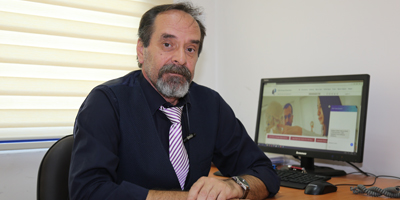Physiotherapy and Rehabilitation must be received after Mastectomy

Academician of European University of Lefke Faculty of Health Sciences Department of Physiotherapy and Rehabilitation Dr. Aydın Meriç made statements on Physiotherapy and Rehabilitation after Mastectomy (Breast Removal Operation) and conveyed detailed information.
Meriç said that, after mastectomy, scar formation, respiratory and circulatory problems, soft tissue shortening (pec.major, etc.), neurological problems (nerve damage, pain, loss of strength, etc.) can lead to loss of post-operative function loss. Meriç also said that in post-operative processes; desiv capsulitis, Myofascial and / or neural dysfunction, pain and loss of normal joint movement of the shoulder, Posture disorder: shoulder dislocation, pain and loss of normal joint movement, short and long term muscle weakness, difficulty in performing daily living activities, lymph circulation disorders can be experienced and added that in addition to problems related to axillary web and lymphedema, loss of quality of life may be the biggest problem in this period.
Meriç further said that “Medical follow-up after mastectomy should also be evaluated in terms of physiotherapy and rehabilitation, and the patient should be discharged after surgery and the evaluation should continue at post-operative 3rd week, 3rd month, 6th month, 9th month and 12th month”. Meriç stated that complaints will decrease as the patient gets into physiotherapy and rehabilitation program and added that with the program the patient will feel independent. Stating that physiotherapy and rehabilitation should be designed according to the needs of the patient, Meriç said that post-operative physiotherapy and rehabilitation should include protection against potential problems.
Meriç summarized the frequently asked questions after the breast removal operation
For what purpose should I use my arm for?
You must use your arm since the veins are in the recovery period, Reconnections occur in the armpit and chest wall area (the site where the lymph nodules are removed), 7-10 days is required for new connections and no shoulder adhesion develops, and Activities with friction effect in the presence of drains increase seroma.
Should I let my body rest?
Your body doesn’t care if your house needs cleaning, or your garden needs care, or your dog needs to walk! What does it mean?
Avoid cooking and housework, avoid work related activities, reduce computer activities, ask someone else to do your daily work, avoid severe (strenuous) activities and exercises. In short, remember that your body also needs to rest.
The exercise program should be evaluated and revised at regular intervals. Stretching should be given within the pain limit and the surgical technique and radiogen fibrosis should be taken into consideration during stretching.
The pain causes additional problems (frozen shoulder, etc.) and Insomnia as it prevents movement.
The treatment should start pain treatment as early as possible, continue on a daily basis, and the patient should be considered as a whole, patient safety should be considered, wrong promises should not be made, and compelling methods should be avoided. Treatment should include not only the patient, but also the relatives of the patient.
During patient education (target normal functional level), safety warnings, possible complications (seroma, lymphedema, etc.), information about the content of the rehabilitation process, Pain control, Wound and skin care, Recommendations for returning to normal activities and the patient’s self-techniques to support the rehabilitation process should be given clearly.
Individual physiotherapy and rehabilitation programs should be preferred instead of standard physiotherapy approaches.
